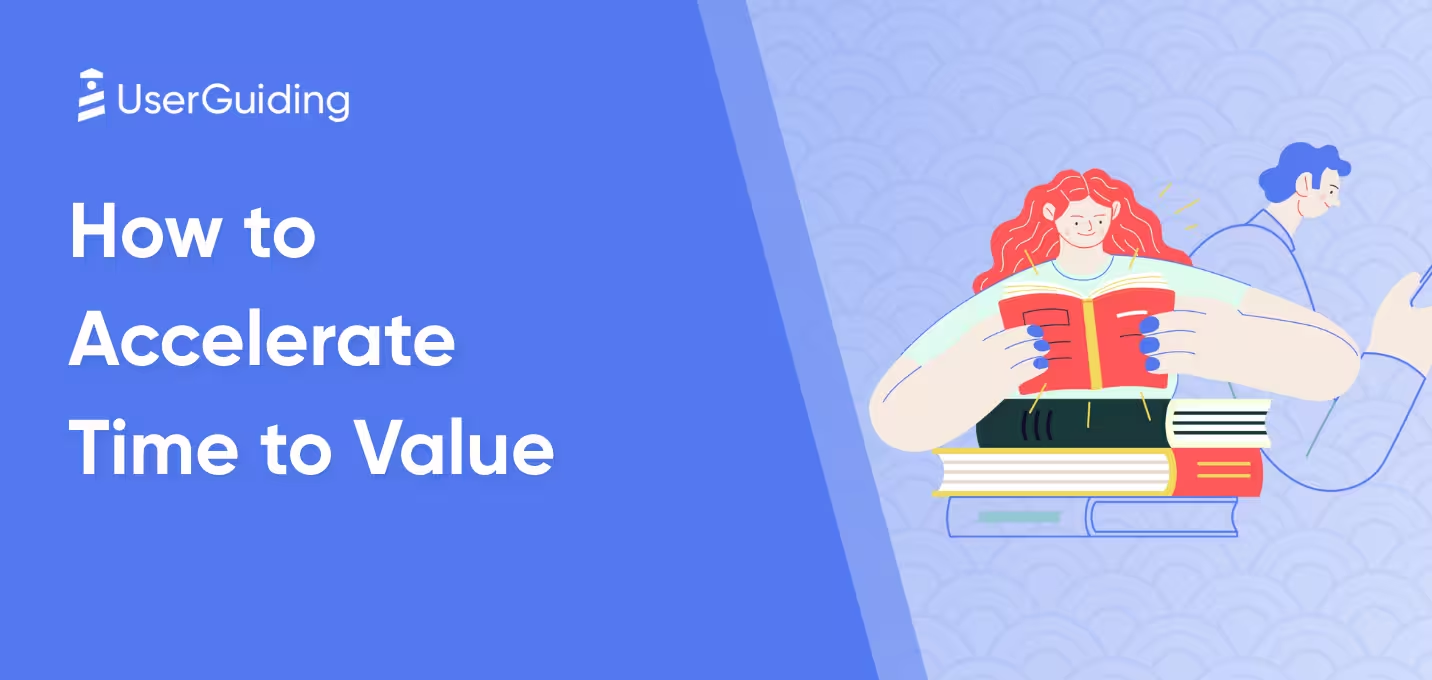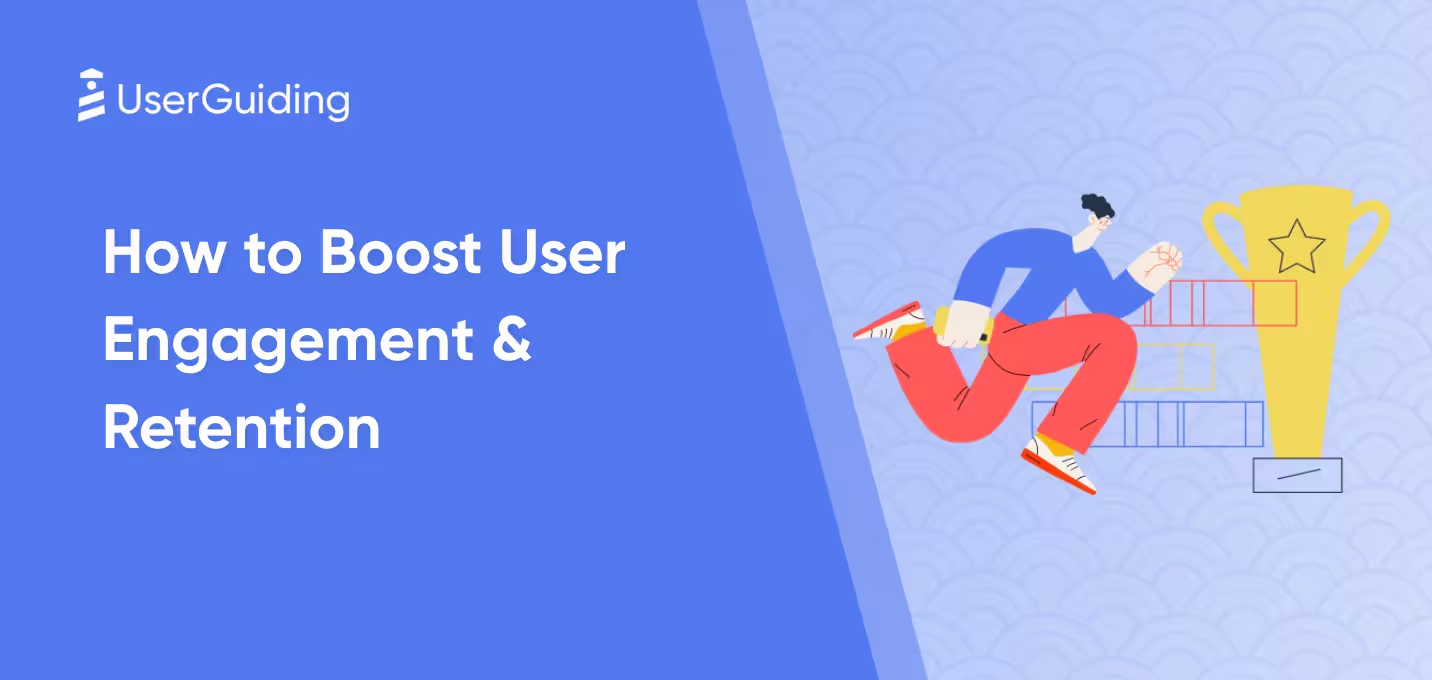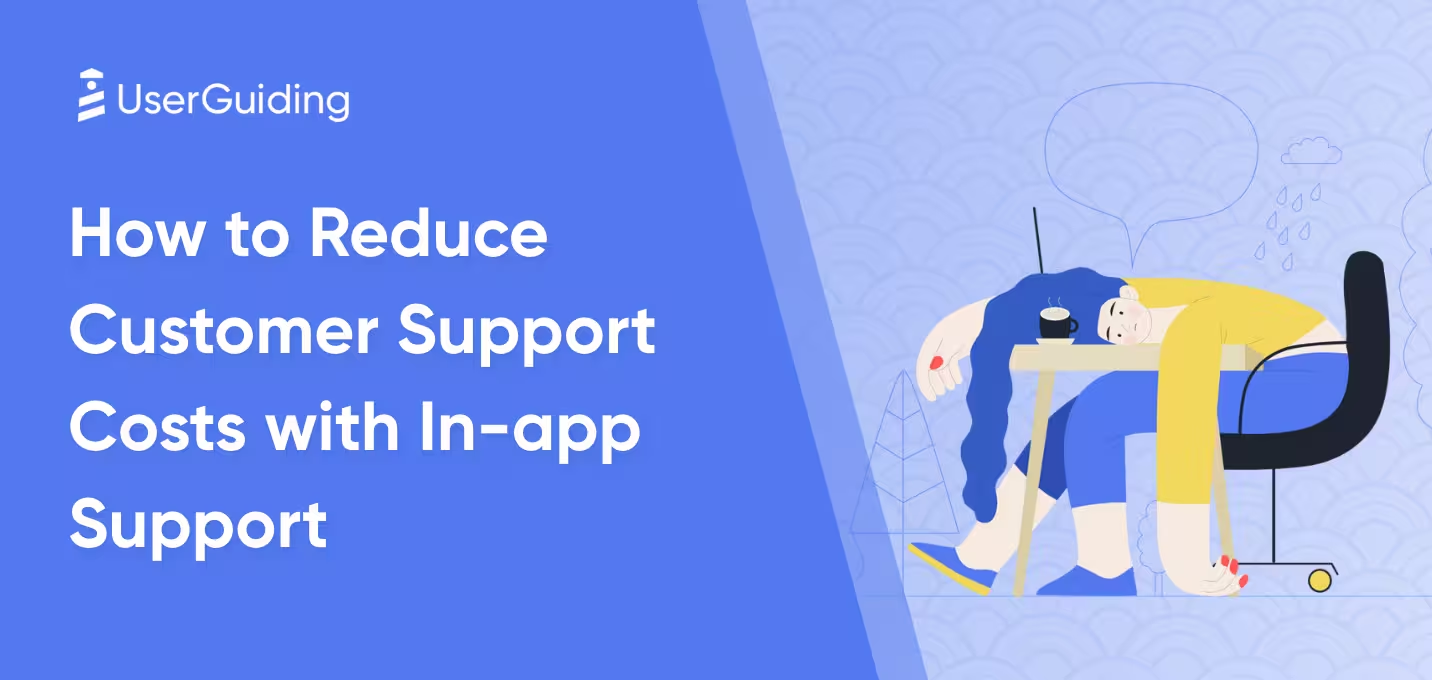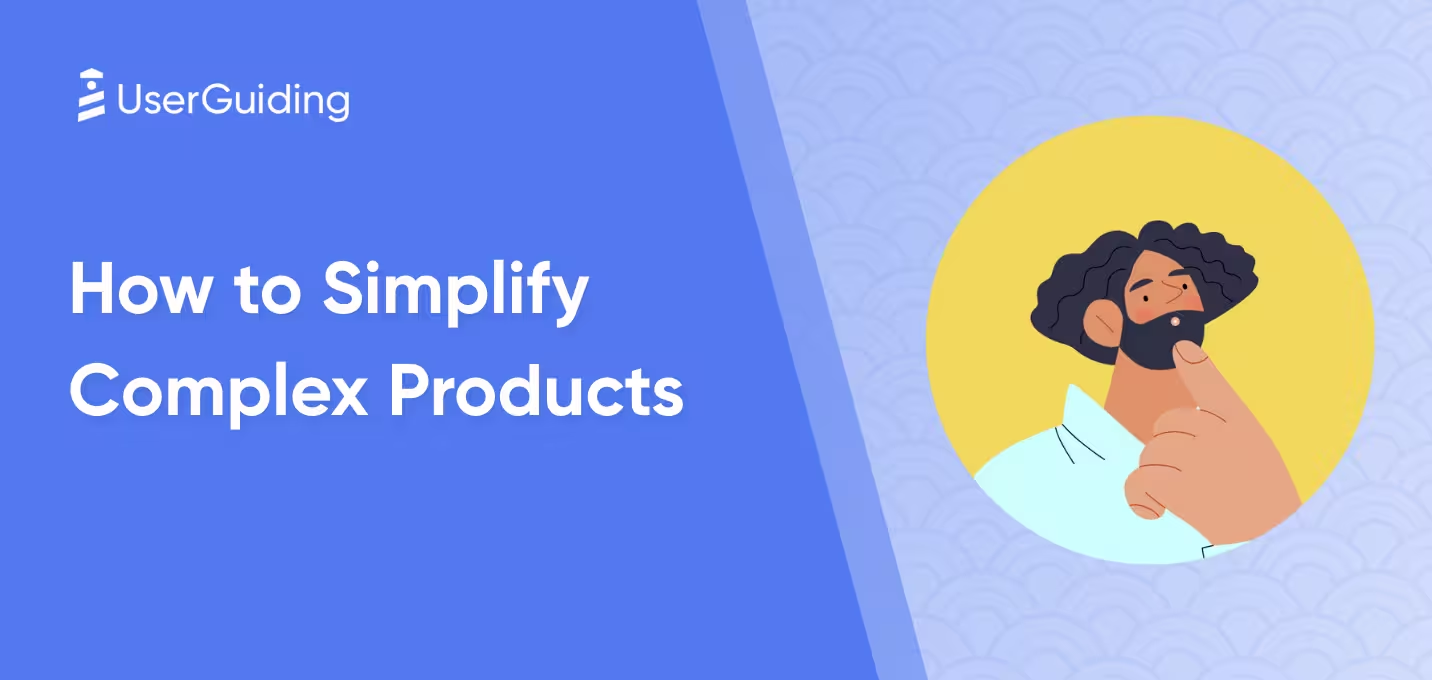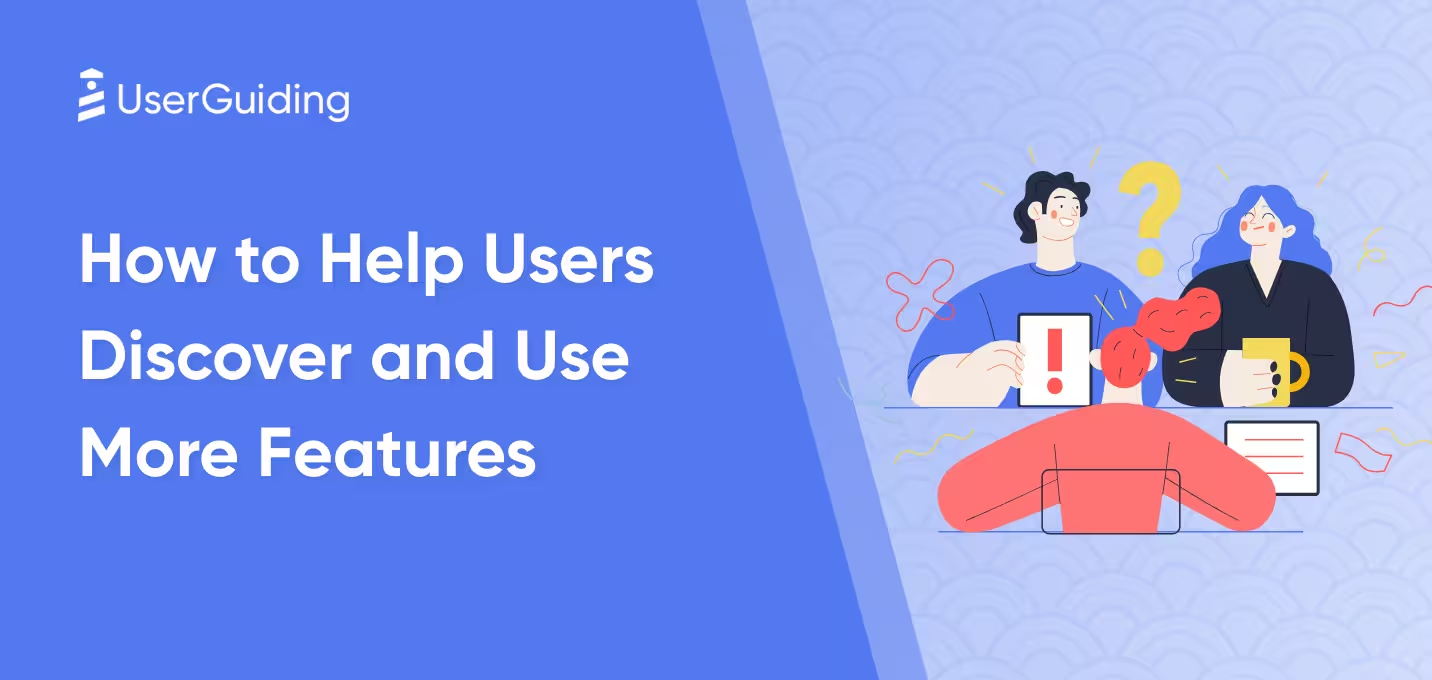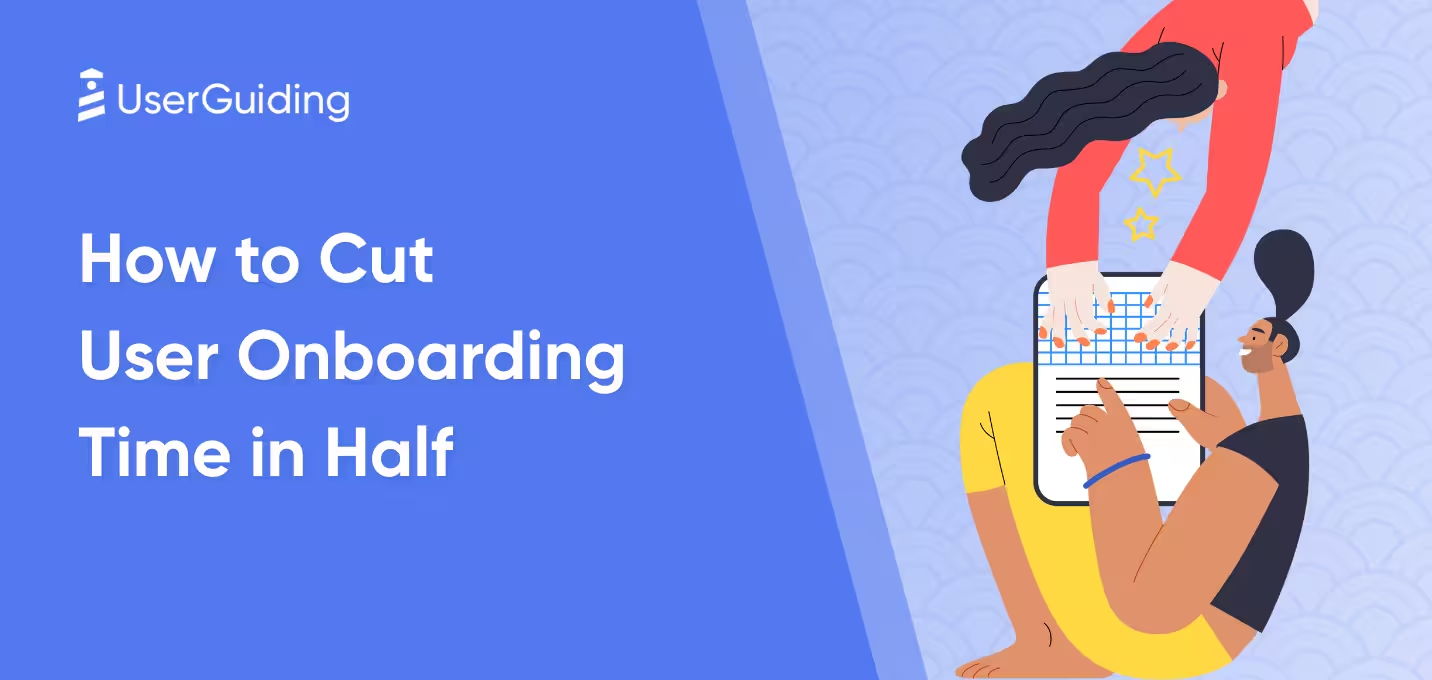

TL;DR
- The customer success strategies that you need will inevitably change according to the phase of growth that your company is in.
- When you have tens of users, your founders should spend a lot of time listening to customers to understand their pain points. Make it as easy as possible for users to contact you, and don't try to solve too many use cases at once.
- When you have hundreds of users, you can start segmenting them by Jobs To Be Done (JTBDs). Start investing in content, particularly your knowledge base and your blog, and don't overwhelm yourself with too many customer success metrics.
- When you have thousands of users, you'll need an automated onboarding process that points people towards the features they need. Now is the time to go all-in on data and metrics, particularly as your team grows.
- UserGuiding can support you with customer success by letting you create interactive onboarding elements, NPS surveys and a help center — all without needing code.
Are you looking to scale customer success in your SaaS company?
It's not easy to manage customer success alone, especially as your business starts to grow and you acquire more users.
The practices that served you well at 10 monthly active users (MAUs) no longer serve you when you have 1,000, or 10,000.
So how do you address that problem? You know that your customers are important and you want to build long-term, win-win relationships with them, but how should your approach to customer success change as you scale?
This article will discuss these questions and give you a customer success road map that you can follow.
First: which phase of growth are you in?
We've structured this article so that it introduces different customer success (CS) strategies at different stages of your SaaS growth journey.
That's because a CS strategy that's essential is one phase of your business might be impractical or even counter-productive during a different phase.
Feel free to use the table of contents on the left to skip to whatever stage your business is currently in.
Phase 1: 10s of customers
Conduct customer development interviews
It's common for early-stage founders to have a vision for their product, fall in love with that vision, and execute on it enthusiastically, regardless of market feedback.
So common, in fact, that legendary entrepreneur Steve Blank has estimated that 50% of startups go bust solely for this reason!
A better approach, as advocated by the classic book Lean Customer Development, is to do product development and customer development in tandem.

At this stage of your business, you have so few customers that your founding team should make the time to speak to all of them personally.
As far as you possibly can, don't bias them with your own ideas for the product. Instead, listen very carefully as they tell you about the pain that they're facing, so that you can read between the lines and work out what success would look like to them.
As you understand their pain points better, go back to your engineering team and ensure that the customers' problem is solved by your product. Once a product iteration is developed, you can then return to your customers to see what they think of it.
This cycling back and forth between product development and listening to customers should continue throughout your business' life, but it's especially essential at this early stage.
Make it easy for customers to contact you
To facilitate the kinds of conversations you'll need to have in order to provide great customer success, you'll want to make it as easy as possible to collect feedback from your early users.
There are tons of ways to do this, most of them free or very cheap.
You can install an online chat widget for free using something like Tidio:

Are you using Elementor, Divi, or something similar for the first version of your site?
Every single site builder tool out there will give you the option to create a Contact Us form that you can place on your site in a highly visible way.

Want to take it a stage further? Put a phone number on your site and allow customers to call you.

Yes, it's 2024, but there's absolutely still a place for getting customers on the phone and talking to them about the struggles they're having.
You'll probably even stand out by doing this, as most SaaS businesses are either too scared of getting real user feedback or too overwhelmed by the volume of feedback to make time to answer the phone.
Focus on renewals
You'll find lots of guides online giving you all sorts of advanced tactics for upselling and cross-selling.
If you're later on in your journey, these are great, but at this early stage, you want to focus on:
- Nailing one offer
- Having one customer segment
- Getting that type of customer to renew consistently
If you try to diversify and offer that customer more than one offer at once, you'll spread yourself too thinly. This tends to lead to either burnout or getting out-competed by another SaaS team who put their limited resources towards nailing one offer.
The riches in the SaaS business model come from retaining your existing customers, far more so than they do from getting new ones or giving customers upsells and cross-sells.
From a customer success point of view, this means you should keep things simple. Find out what it is that makes customers want to renew their subscription, and do more of that.
Don't know what it is that's leading customers to renew or churn? Talk to them!
This includes exit interviews when an early customer decides that they want to leave your app. The amount of honest insight you can gain from listening to someone who no longer has an interest in your product might surprise you.
Phase 2: 100s of customers
Segment your users
In the previous phase of growth, you had one user persona that was aiming to solve one specific problem using your product. So there was no need to spend excessive time thinking about segmentation.
Once you get into the hundreds of customers, this starts to change. Different product use cases will emerge – probably several that you didn't think of!
Since your customers now have various different goals, giving each segment exactly the same generic product experience is a recipe for disaster.
A classic example of this mistake is when SaaS companies give every single user the exact same product tour, without any thought as to whether the user cares about the features they're looking at.
Instead, segment your customers according to their Jobs to Be Done. In other words, it's the objective that your users are looking to meet by using your product that should dictate what segment they go into.
How do you know what their objective is? You can still get a lot from asking customers this question directly. At this scale, you can also use tools like Mixpanel and Hotjar to see where your customers are spending the most time in your product, and infer from their behavior.

Example of Hotjar heatmap
As your understanding grows, you can map out the user journey for each segment and see what you can do at each stage of the process to make their lives a little bit easier.

An example of a user journey
Start investing in content
You probably got your early users from your network and were able to help them troubleshoot issues with your MVP by addressing them personally.
As you scale, doing everything manually becomes less and less practical, simply because there aren't enough hours in the day to talk to hundreds of customers.
This is where content becomes your friend.
It's wise to start creating a knowledge base using something like Zendesk or Freshdesk. This is a database of common support queries (often derived from interactions with support agents) that your customers can search through as they please.

The advantage of a knowledge base from a customer success point of view is that your user is empowered to seek answers to their own questions. This is often faster than speaking to an agent, and removes the friction of having to talk with someone you don't know.
Applying this same line of thinking to earlier in the customer journey, it's also smart when you have a few hundred users to start investing in blog content (like this article!) that educates your audience, perhaps even before they become paying customers.
Trust is something that's built over time. The more valuable the content you give your customers at every stage of their journey, and the more tailored that content is to their specific needs, the more trust will build up – and the less likely that customer is to churn.
Choose ONE North Star Metric for customer success
In my experience, mid-stage SaaS businesses either focus on no metrics at all, or on far too many metrics all at once – which defeats the point of "focusing."
The second category is more common. "Identify 20 customer success metrics that are important, track all of them, and overwhelm yourself with a huge amount of data that isn't immediately actionable."
If that sounds familiar, I have a simple suggestion for you. Choose one metric to track consistently for your CS work, and focus everyone's attention on that.
Which metric should you choose? Here are a few ideas to consider:
- Customer Churn Rate: The percentage of last month's customers who no longer use your product.
- Net Dollar Retention: A measurement of the fluctuation in monthly recurring revenue.
- Customer Satisfaction Score: How satisfied your customers are with the quality of service you're providing them with.
- Lifetime Customer Value: The amount of money an average customer pays your business over the entire time they work with you.
For exact formulas to calculate these metrics, as well as numerous other customer success metrics to reflect on, consider checking out this article.
Phase 3: 1000s of customers
Automate your user onboarding
Until this point, you've probably got away with giving your customers a generic onboarding call to kickstart their journey, an email sequence for new users – or, perhaps, no onboarding at all.
As a result, numerous customers are leaving your platform before they get a chance to activate. By not making their first few steps with your product as seamless as possible, you're leaving money on the table.
You can easily fix this problem by adding onboarding elements as an overlay to your product. Here are some examples:
You can use a product tour to highlight the most important features to a particular user's segment when they join your app:

Product tours often come with checklists, so that it's super easy for users to go through the tasks they need to complete in order to reach the Aha Moment, one by one:

Use modals, tooltips and hotspots to draw your customer's attention selectively. You can keep doing this well after the initial product tour – this is called "secondary onboarding."
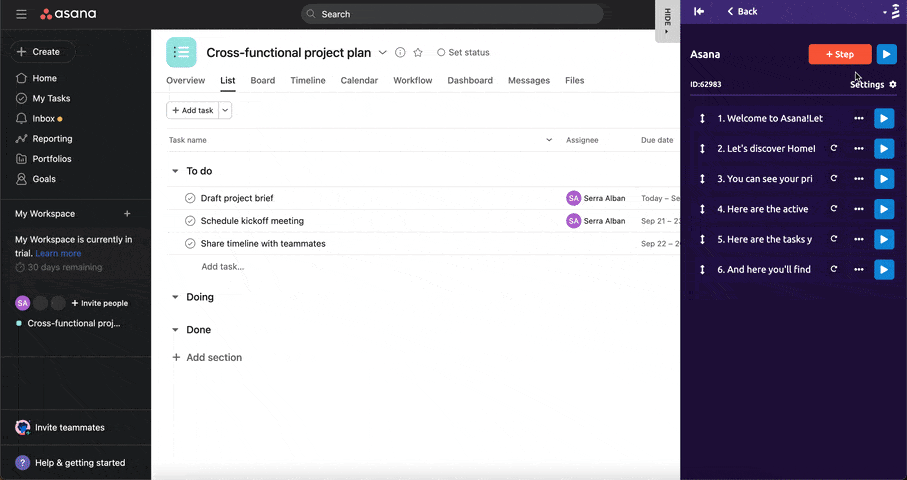
Creating a tooltip in UserGuiding
Or import your knowledge base into a resource center, so that customers can access it from inside your app:

Our app, UserGuiding, allows non-technical product people to build onboarding elements like these in minutes, without having to mess around with code.
Automating the process of customer education through onboarding is really powerful. It means that users are more likely to understand the value your product provides and solve any problems they have with it – without needing to talk to support.
Make informed business decisions from data
Once you have thousands of users, you're at the stage where you have enough customer data to draw statistically significant conclusions. And, even better, you now have the manpower to take the time to collect the data and analyze it in sufficient detail.
You'll want to look at two types of data: quantitative and qualitative.
Quantitative data gives you the raw numbers to answer questions like:
- How many users activated in the last 2 weeks?
- What was your churn rate in January, and is that greater or less than the churn rate a year ago?
- What is the average NPS score of current users who have referred at least once in the last 6 months?
- What percentage of users who are marketing agencies adopted the new feature that you released after Christmas?
As well as classic SaaS tools like Mixpanel, you can use our in-built analytics suite to measure the behavior of your users by segment:

We invite you to spend time looking at our list of customer success metrics, choose the ones that matter the most to your business, and collect the quantitative data you need on a monthly basis.
But what's just as important (and easily forgotten!) is the qualitative data. This gives you the "why" behind the numbers.
Rather than contacting individual users manually, you can actually automate the collection of qualitative feedback inside your product.
Simply create an in-app survey with UserGuiding, and set it to show to the segment of users who you need the feedback from.

Create an in-app survey with UserGuiding in just a few minutes
Expand your customer success team
At the beginning of your SaaS journey, customer success was all about the founders talking with customers personally. But once you have thousands of MAUs, this becomes impractical.
As a result, you'll need to start hiring a dedicated CS person, and, eventually, a dedicated CS team. Your founders will need to work less on being customer-focused themselves, and more on ensuring that the culture of your entire organization is customer-centric.
A common sticking point here is ensuring alignment between your CS and product departments.
It's CS' job to know the needs and pains of the customer inside out, and communicate that to the rest of the team.
It's the product team's job to problem-solve and ensure that your product gives your users what they need.
Your founders and operations people will need to set up processes so that CS sits in on product meetings and vice versa, so that both sides of the team are rowing in the same direction.
Need a tool to help with customer success?
We hope that this article has given you some customer success ideas that are a fit for the phase your business is currently in, together with a roadmap for the phases that are ahead of you.
If you're looking for a cheap, intuitive tool that will help you deliver customer success consistently, do take a look at UserGuiding.
It's a great way to add onboarding elements, NPS surveys and product analytics without requiring code or your developers' time.
You can try it for free here and sign up in literally one click.

















.svg)
.svg)
.svg)
.svg)
.svg)

.svg)
.svg)












.svg)
.svg)




.png)


